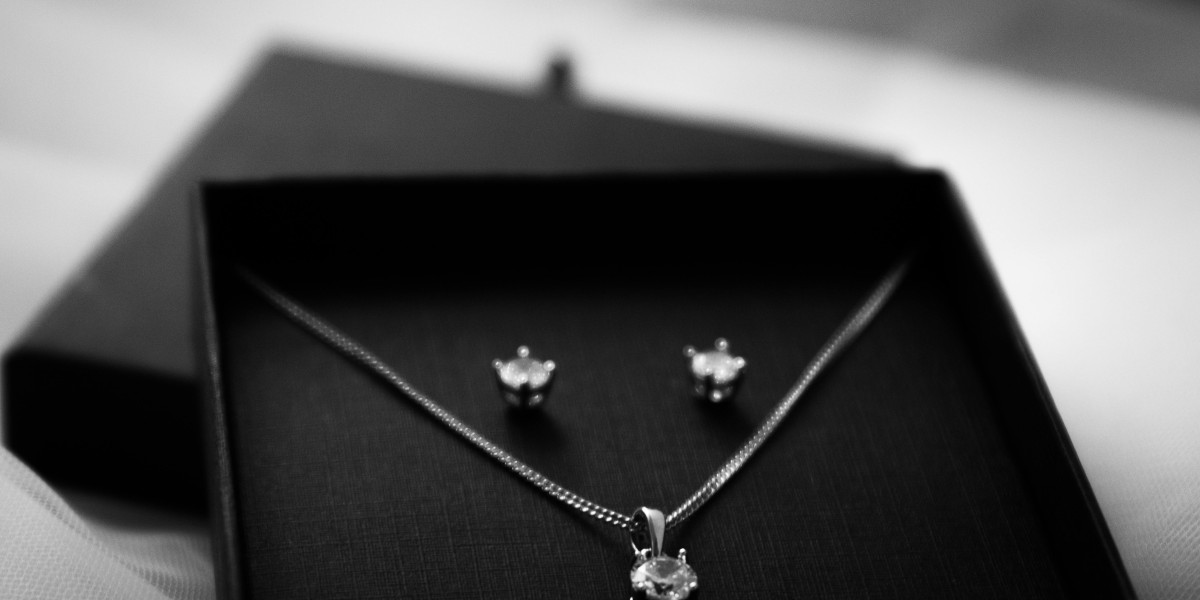In this blog, we’ll explore the fascinating science behind the creation of moissanite, focusing on the unique process that turns this rare material into the stunning earring studs you adore.
1. The Origins of Moissanite: A Stellar Discovery
The story of moissanite begins far from Earth—in space. Moissanite was first discovered in 1893 by French chemist Henri Moissan, who found tiny crystals of a new mineral in a meteorite crater in Arizona. These crystals were unlike anything seen before, exhibiting exceptional hardness and brilliance. Initially, Moissan believed the crystals were diamonds, but further analysis revealed they were a previously unknown mineral. Moissanite was born, named in his honor.
While natural moissanite is exceedingly rare (there are no large deposits of it on Earth), the crystal’s exceptional characteristics—its hardness, brilliance, and fire—make it an attractive option for use in jewelry, especially earrings. As a result, scientists have since figured out how to recreate moissanite in a laboratory setting, making it more accessible to the general public.
2. The Lab-Grown Moissanite Process: From Silicon Carbide to Gemstone
Moissanite is made from silicon carbide (SiC), a compound that occurs naturally in meteorites but is rare on Earth. To create lab-grown moissanite, manufacturers begin by synthesizing silicon carbide crystals in a high-temperature, high-pressure environment. The process involves several key steps:
Step 1: Creating the Silicon Carbide
The production of moissanite starts with the creation of silicon carbide. Silicon carbide is made by heating silicon and carbon together at extremely high temperatures (around 2000°C or 3632°F) to form the crystal. The quality of the silicon carbide produced will determine the brilliance and clarity of the finished moissanite stones. For this reason, manufacturers use high-purity silicon and carbon sources to ensure the best possible outcome.
Step 2: Growing the Crystals
Once the silicon carbide material is ready, it’s placed into a growth chamber where it undergoes a controlled growth process. This process is typically done using two methods: the high-pressure high-temperature (HPHT) method or the chemical vapor deposition (CVD) method.
HPHT Method: This method uses high pressure and temperature to recreate the extreme conditions under which natural diamonds form. The pressure and temperature are carefully controlled to grow the crystals into larger sizes suitable for gemstones.
CVD Method: This method involves the use of a gas mixture (usually methane and hydrogen) that is exposed to high-energy plasma, which causes the silicon carbide to crystallize onto a substrate. The CVD method allows for greater control over the crystal’s growth and can produce larger, more consistent moissanite crystals.
These techniques allow for the creation of large, high-quality crystals that will be cut and polished into beautiful moissanite stones.
Step 3: Cutting and Polishing the Moissanite
Once the moissanite crystals are grown, they are carefully cut into various shapes, such as round, oval, cushion, or princess cuts, depending on the desired style of the earrings. The cutting process is similar to that of diamonds, requiring highly skilled gem-cutters who use advanced equipment to create facets that maximize the stone’s brilliance and fire.
Polishing the moissanite is another critical step, as it enhances the stone’s surface and ensures it catches the light perfectly. This is where the signature sparkle of moissanite earrings studs comes from—the meticulous polishing ensures that the stone reflects and refracts light in a way that creates stunning visual effects.
3. The Chemistry of Moissanite’s Brilliance: Why It Sparkles So Much
The brilliance of moissanite earrings studs is what sets them apart from other gemstones. The science behind moissanite’s exceptional sparkle lies in its unique chemical properties and crystal structure.
Refractive Index: Moissanite has a refractive index of 2.65 to 2.69, which is higher than that of diamonds (2.42). This means that moissanite bends light more effectively, creating a higher level of brilliance. When light passes through a moissanite gemstone, it is bent and reflected multiple times, creating flashes of rainbow-colored light known as "fire."
Dispersion: Moissanite has an extremely high dispersion (or "fire") compared to diamonds. Dispersion is the ability of a gemstone to separate light into its individual color spectrum. Moissanite has a dispersion of 0.104, while diamonds only have 0.044. This makes moissanite especially fiery, giving it a vibrant, rainbow-like display when it catches the light.
These optical properties make moissanite earrings studs not only more affordable but also more brilliant and fiery than many other gemstones, including diamonds.
4. The Advantages of Lab-Grown Moissanite
One of the primary benefits of moissanite is that it is lab-grown, which makes it a more sustainable and ethical alternative to mined gemstones. Since it doesn’t require mining, there is no environmental damage, no exploitation of workers, and no contribution to the depletion of natural resources. Lab-grown moissanite provides the same visual appeal as natural moissanite but is made using much less energy and with greater precision.
Additionally, lab-grown moissanite can be produced with fewer impurities and inclusions, ensuring a cleaner, more beautiful gemstone. Because the process is more controlled, manufacturers can create stones of high clarity and consistency.
5. Why Moissanite Earrings Studs Are a Top Jewelry Choice
Moissanite earrings studs are a standout piece of jewelry for several reasons:
Affordability: Moissanite is significantly more affordable than diamonds, making it an attractive option for those who want a high-quality, beautiful stone without the hefty price tag.
Durability: Moissanite is nearly as hard as diamonds, ranking 9.25 on the Mohs scale of hardness, making it durable enough for everyday wear.
Ethical and Sustainable: Since moissanite is lab-grown, it’s an ethical and environmentally-friendly choice compared to mined gemstones.
The process of creating moissanite earrings studs involves cutting-edge science and technology, resulting in a gemstone that is both stunning and sustainable. Whether you’re drawn to its affordability, its ethical production, or its incredible brilliance, moissanite is an excellent choice for anyone looking for gorgeous, eco-friendly jewelry.
Conclusion
The science behind moissanite earrings studs is a perfect example of how technological advances in the jewelry industry have made luxury more accessible and sustainable. From their creation in the lab to their stunning sparkle, moissanite stones are a true testament to both nature and science. If you’re looking for a dazzling, ethical, and durable alternative to diamonds, moissanite earrings studs offer an exceptional option that combines brilliance with beauty.








